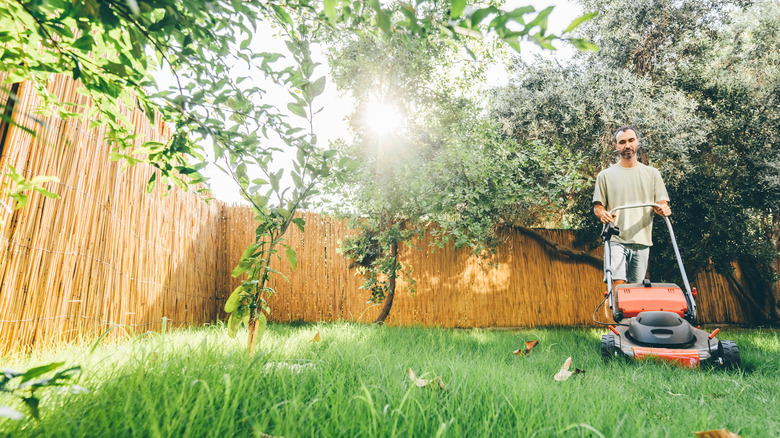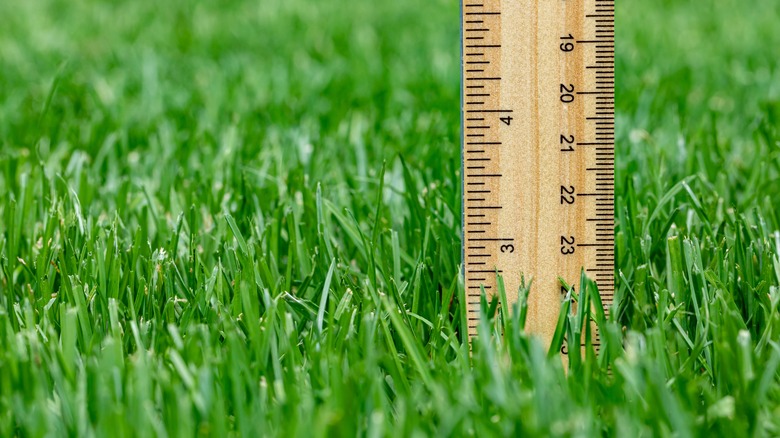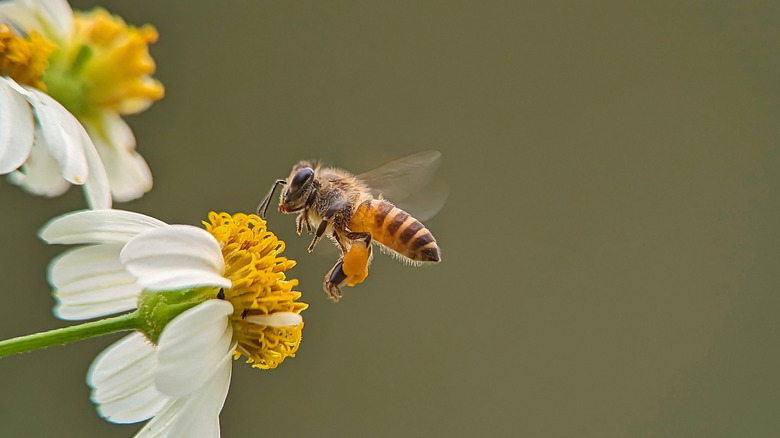The Surprising Benefit Of Mowing Your Lawn Less Often
Mowing the lawn can be a sweaty, time-consuming chore, especially in the summer when the grass seems to grow every time you blink. In fact, during peak season, grass can grow anywhere from 1/10 inch to 1/5 inch per day. That means if you want your yard to look uniform, you're signing up to mow it at least once a week, sometimes more. The best time to mow your lawn for healthy grass is generally in mid-morning, but what about how often you should mow? What if skipping a mow, or even two, wasn't lazy, but actually better for your lawn?
As it turns out, your grass (and the local ecosystem) might thrive more when you give it a break. Beyond saving you time and reducing your fuel or electricity use, mowing less often lets the grass grow a bit longer, which comes with some serious upsides for the health and look of your yard, including fewer weeds and stronger roots. So if you're tempted to let your mower collect a little dust, you may be doing yourself, and your lawn, a favor.
The unexpected perks of mowing less
When you mow less frequently, you're giving your grass a better shot at staying healthy and lush. Cutting the grass too short can stress it out, damaging the turf and exposing the soil to the drying effects of direct sun. But allowing it to grow longer helps shade the soil and keeps moisture locked in. This means you'll water less often and worry less about dry patches. Longer grass blades also crowd out weeds and aggressive species like crabgrass by blocking the sunlight they need to grow.
Most mowers let you raise the blade to 3 to 4 inches. This height is the right length to mow your lawn, as it's ideal for encouraging deeper root systems that can withstand heat and dry spells. In fact, if your region doesn't get much rain, letting your lawn look a little dry and discolored isn't always a bad sign. Your grass adapts to stress by going dormant, and letting your grass grow taller in dry conditions will pay off in the long run. Less mowing, more resilience.
Other benefits of mowing less
Mowing less doesn't just help your grass; it also means you are saving on gas money, aiding the local ecosystem, and reducing air pollution. If you mow too often or start to mow too early in the spring, you'll likely cut down on habitat and food sources for birds and bees. To further support pollinators and biodiversity, consider leaving a small section of your yard to skip mowing altogether or start a pollinator garden.
In addition, there are several other habits you can add to make your lawn even healthier. First, make sure your mower's blade is sharp. Dull blades tear rather than cut, which can leave your grass vulnerable to disease. Leave grass clippings behind to act as a natural mulch, returning nutrients to the soil and reducing the need for fertilizer. You should also aerate your lawn regularly to help oxygen, water, and nutrients reach the root zone more easily. So yes — less frequent mowing can help your grass, but pairing that approach with smart lawn care practices is important to keep your yard greener, stronger, and easier to manage in the long run.


